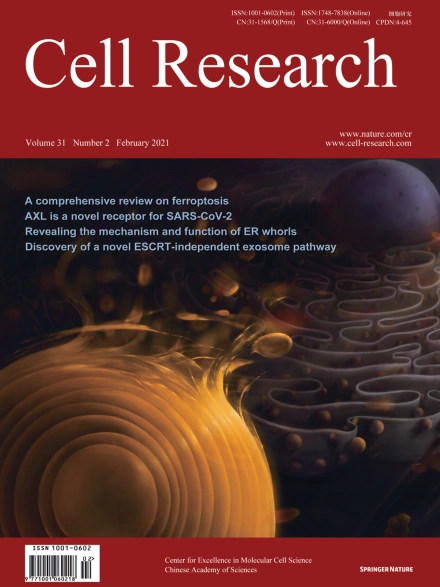
Advanced Search
Submit Manuscript
Advanced Search
Submit Manuscript
Volume 31, No 2, Feb 2021
ISSN: 1001-0602
EISSN: 1748-7838 2018
impact factor 17.848*
(Clarivate Analytics, 2019)
Volume 31 Issue 2, February 2021: 219-228
Active RNA interference in mitochondria
Kuanxing Gao1,2 , Man Cheng2 , Xinxin Zuo1 , Jinzhong Lin3 , Kurt Hoogewijs4 , Michael P. Murphy5,6 , Xiang-Dong Fu7,* , Xiaorong Zhang2,*
1State Key Laboratory of Virology, Hubei Key Laboratory of Cell Homeostasis, College of Life Sciences, Wuhan University, Wuhan, Hubei 430072, ChinaRNA interference (RNAi) has been thought to be a gene-silencing pathway present in most eukaryotic cells to safeguard the genome against retrotransposition. Small interfering RNAs (siRNAs) have also become a powerful tool for studying gene functions. Given the endosymbiotic hypothesis that mitochondria originated from prokaryotes, mitochondria have been generally assumed to lack active RNAi; however, certain bacteria have Argonaute homologs and various reports suggest the presence of specific microRNAs and nuclear genome (nDNA)-encoded Ago2 in the mitochondria. Here we report that transfected siRNAs are not only able to enter the matrix of mitochondria, but also function there to specifically silence targeted mitochondrial transcripts. The mitoRNAi effect is readily detectable at the mRNA level, but only recordable on relatively unstable proteins, such as the mtDNA-encoded complex IV subunits. We also apply mitoRNAi to directly determine the postulated crosstalk between individual respiratory chain complexes, and our result suggests that the controversial observations previously made in patient-derived cells might result from differential adaptation in different cell lines. Our findings bring a new tool to study mitochondrial biology.
https://doi.org/10.1038/s41422-020-00394-5